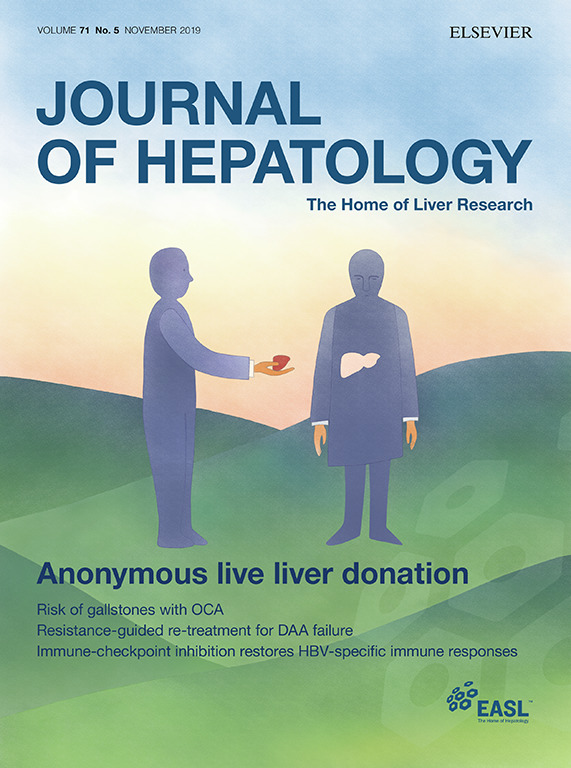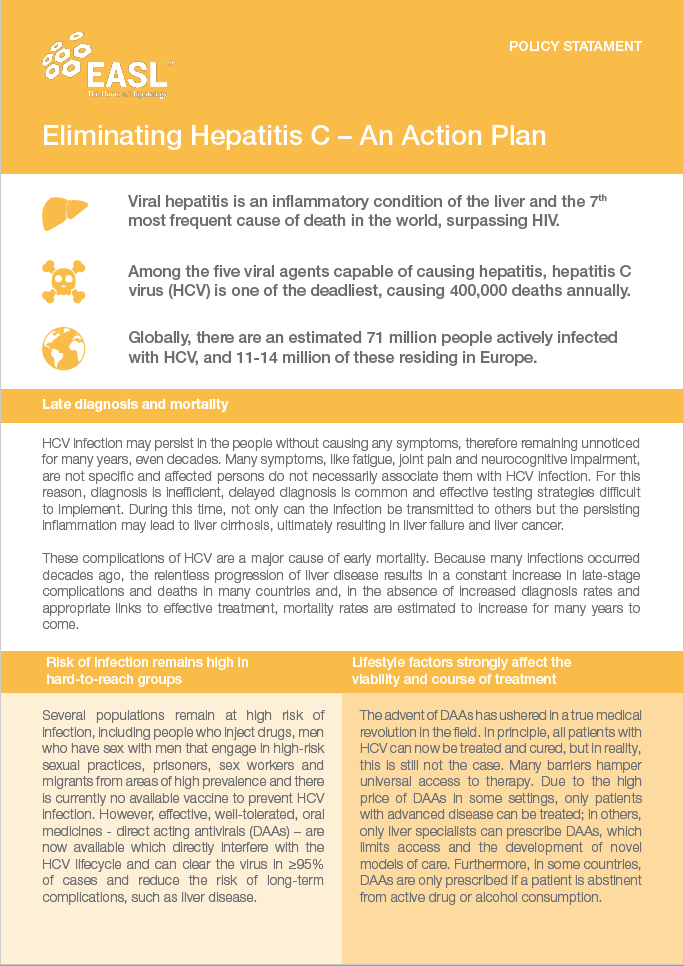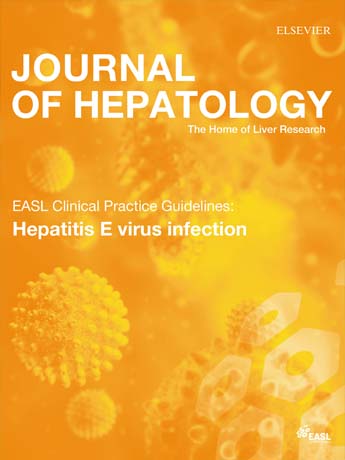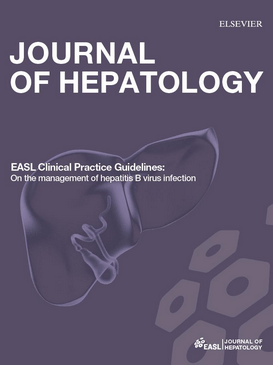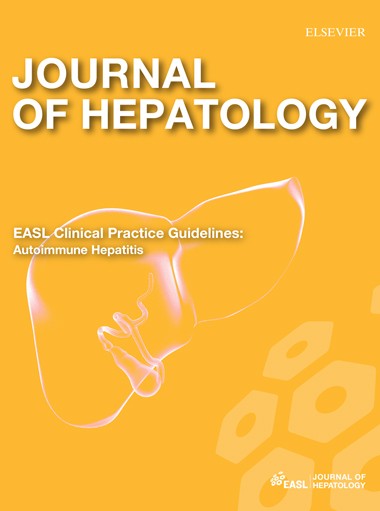This final update of the EASL Recommendations on Treatment of Hepatitis C series is intended to assist physicians and other healthcare providers, as well as patients and other interested individuals, in the clinical decision-making process, by describing the current optimal management of patients with acute and chronic HCV infections.
Read MoreViral hepatitis is an inflammatory condition of the liver and the7th most frequent cause of death in the world, surpassing HIV
Full version of Policy Statement
Hepatitis C virus (HCV) infection is a major cause of chronic liver disease. As a result, worldwide there are approximately 71 million chronically infected individuals. Clinical care for patients with HCV-related liver disease is advancing considerably. Most importantly thanks to an enhanced understanding of the pathophysiology of the disease. And also because of developments in diagnostic procedures and improvements in therapy and prevention. EASL Recommendations on Treatment of Hepatitis C describe the optimal management of patients with acute and chronic HCV infections in 2018 and onwards.
Read MoreHepatitis E Virus Infection (HEV) is a significant cause of morbidity and mortality, representing an important global health problem. Our understanding of HEV has changed completely over the past decade. Previously, the common thought was that HEV was limited to certain developing countries. We now know that HEV is endemic in most high-income countries and is largely a zoonotic infection. The focus of this Clinical Practice Guideline will be on HEV genotype 3 (and 4). This is due to the paradigm shift in our understanding of zoonotic HEV. And also because locally acquired HEV is now the commonest cause of acute viral hepatitis in many European countries.
Read MoreEASL Guideline on Hepatitis B. Hepatitis B virus (HBV) infection remains a global public health problem with changing epidemiology due to several factors including vaccination policies and migration. This EASL Clinical Practice Guideline presents updated recommendations for the optimal management of HBV infection. Chronic HBV infection can be classified into five phases: (I) HBeAg-positive chronic infection, (II) HBeAg-positive chronic hepatitis, (III) HBeAg-negative chronic infection, (IV) HBeAg-negative chronic hepatitis and (V) HBsAg-negative phase.
Read MoreAutoimmune hepatitis (AIH) was the first liver disease for which an effective therapeutic intervention, corticosteroid treatment, was convincingly demonstrated in controlled clinical trials. However, 50 years later AIH still remains a major diagnostic and therapeutic challenge.
Read More


